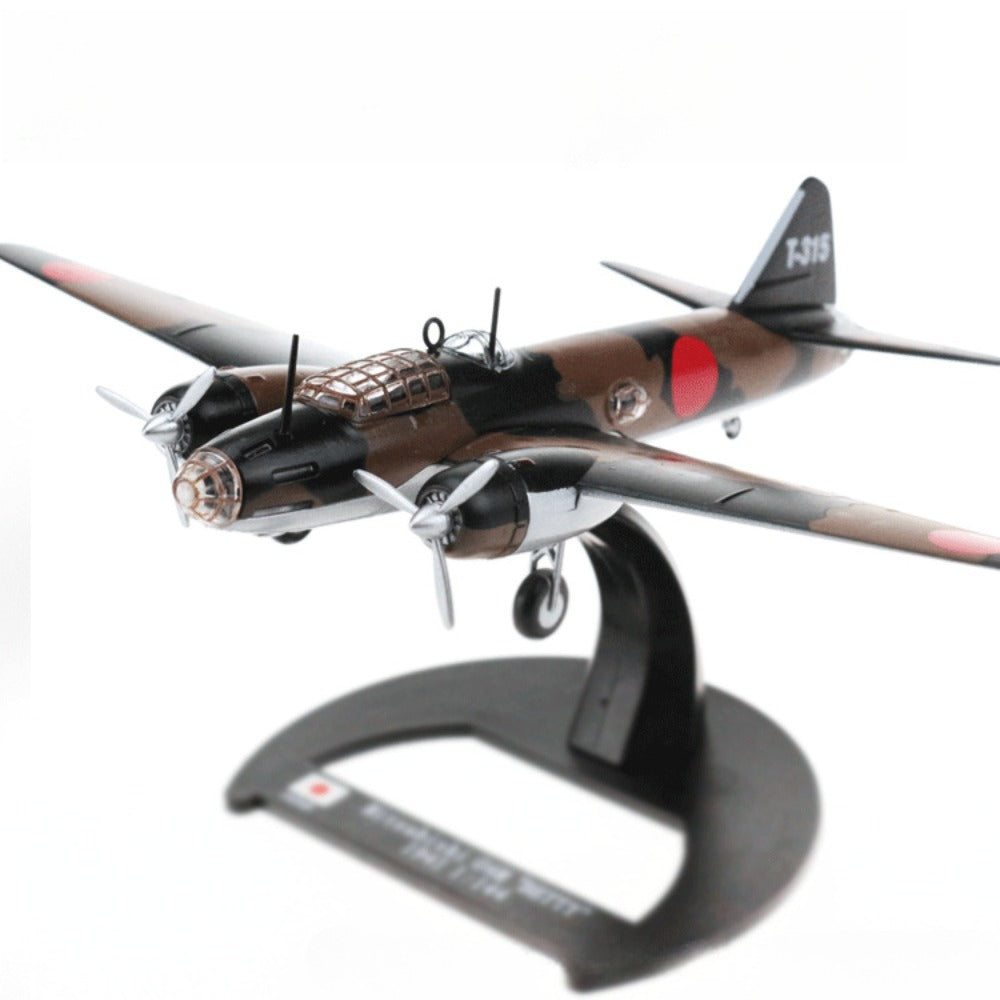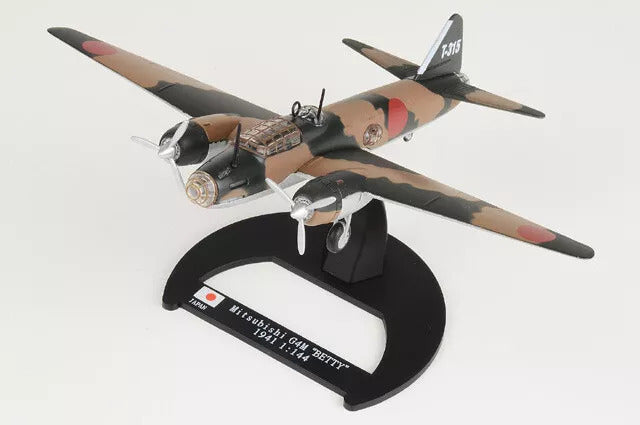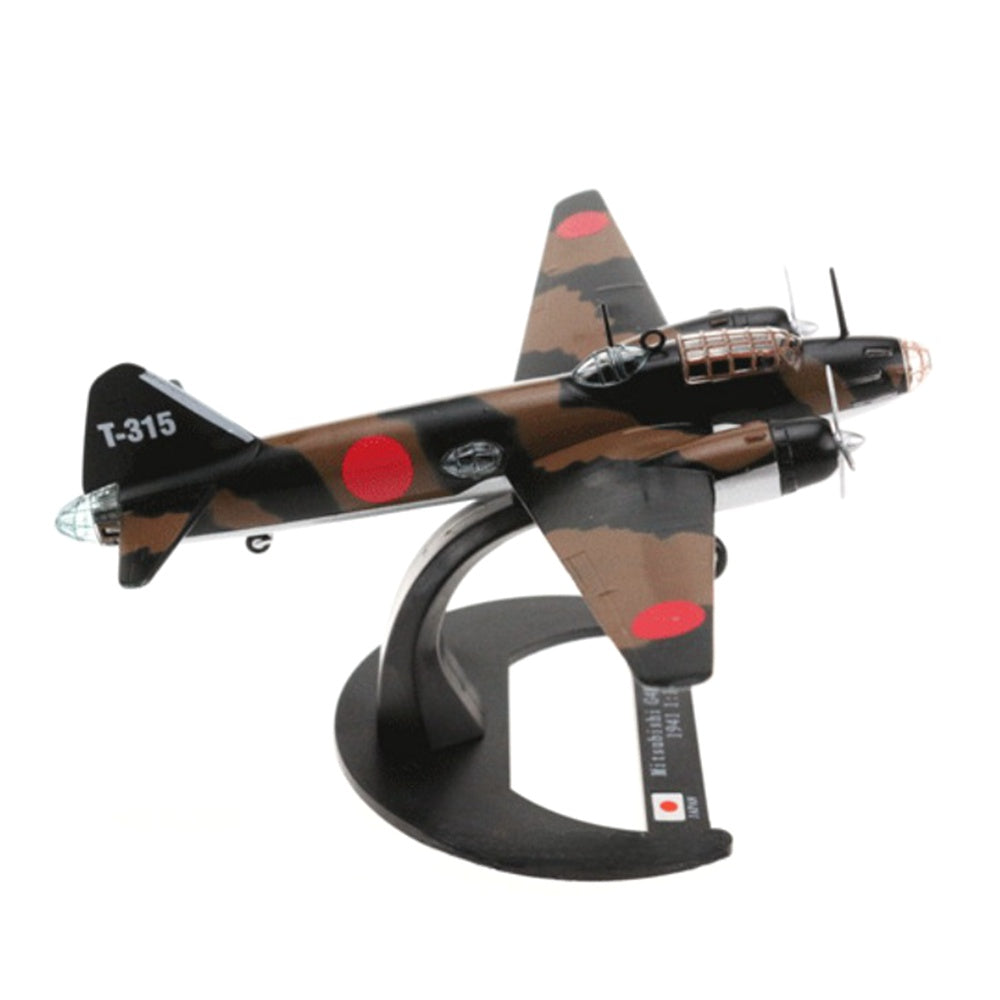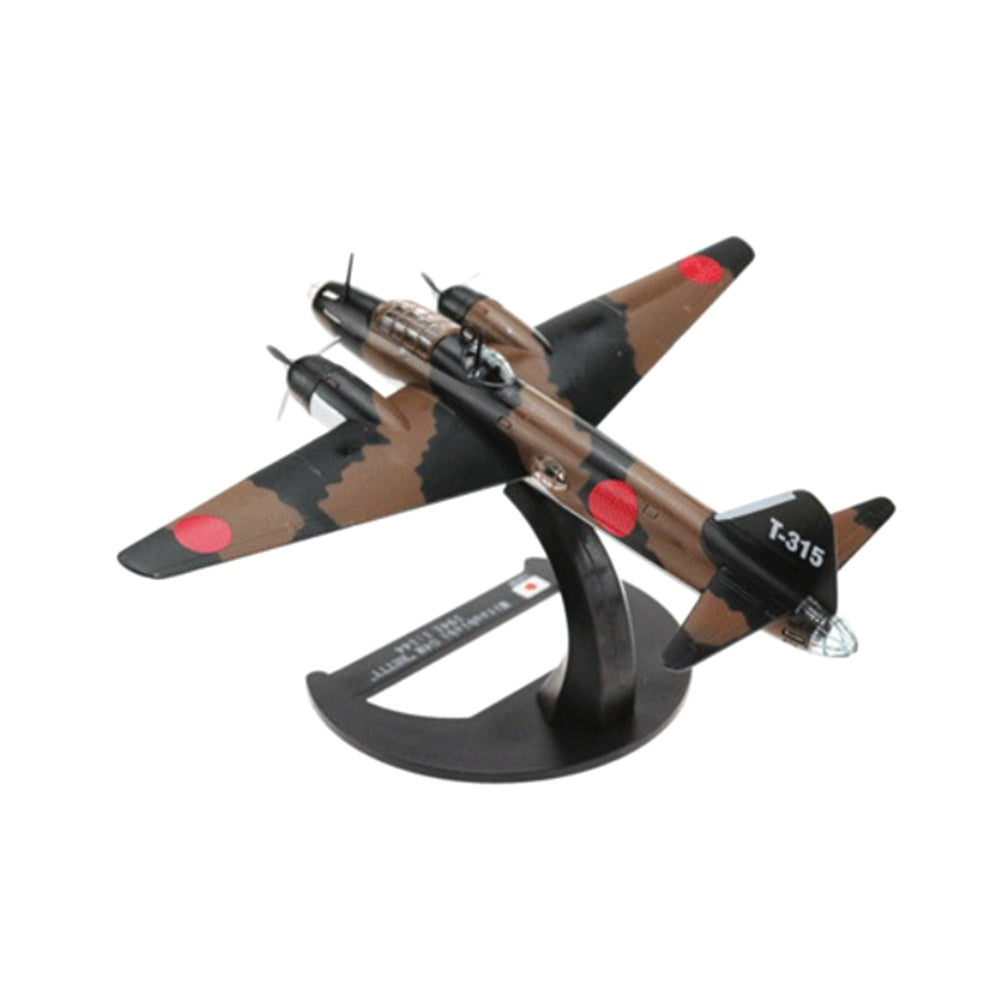old boy hobby
1/144 Scale Mitsubishi G4M Betty WWII Japan Bomber Diecast Model Aircraft
1/144 Scale Mitsubishi G4M Betty WWII Japan Bomber Diecast Model Aircraft
Couldn't load pickup availability
- diecast and pre-painted, ready to display
- material: metal & plastic
- scale: 1/144
- size: 21.5*7.8*11.6 cm
The Mitsubishi G4M is a twin-engine, land-based medium bomber formerly manufactured by the Mitsubishi Aircraft Company, a part of Mitsubishi Heavy Industries, and operated by the Imperial Japanese Navy from 1940 to 1945. Its official designation is Mitsubishi Navy Type 1 attack bomber (一式陸上攻撃機, 一式陸攻, Ichishiki rikujō kōgeki ki, Isshikirikukō) and was commonly referred to by Japanese Navy pilots as Hamaki (葉巻, "cigar", lit. "leaf roll") due to the cylindrical shape of its fuselage and its tendency to ignite after a hit. The Allied reporting name was "Betty".
Designed to a strict specification to succeed the Mitsubishi G3M already in service, the G4M boasted very good performance and excellent range and was considered the best land-based naval bomber at the time. This was achieved by its structural lightness and an almost total lack of protection for the crew, with no armor plating or self-sealing fuel tanks. The G4M was officially adopted on 2 April 1941 but the aforementioned problems would prove to be a severe drawback, often suffering heavy losses; Allied fighter pilots nicknamed the G4M "The Flying Lighter" as it was extremely prone to ignition after a few hits. It was not until later variants of the G4M2 and G4M3 that self-sealing fuel tanks, armor protection for the crew and better defensive armament was installed.
Nevertheless, the G4M would become the Navy's primary land-based bomber. It is the most widely produced and most famous bomber operated by the Japanese during World War II and it served in nearly all battles during the Pacific War. Attacks by G4M and G3M bombers resulted in the sinking of the Royal Navy battleship HMS Prince of Wales and battlecruiser HMS Repulse, the first time capital ships actively defending themselves were sunk solely by air power while in the open sea. G4Ms and G3Ms are also credited with sinking the heavy cruiser USS Chicago during the Battle of Rennell Island. The aircraft later served as the mothership that carried the Yokosuka MXY-7 Ohka, a purpose-built anti-ship suicide weapon during the final years of the war. Of the 2,435 G4Ms produced, no fully intact aircraft have survived, though several airframes exist as unrestored wreckage or in partial states of completion.
--copied from Wikipedia
Share
















